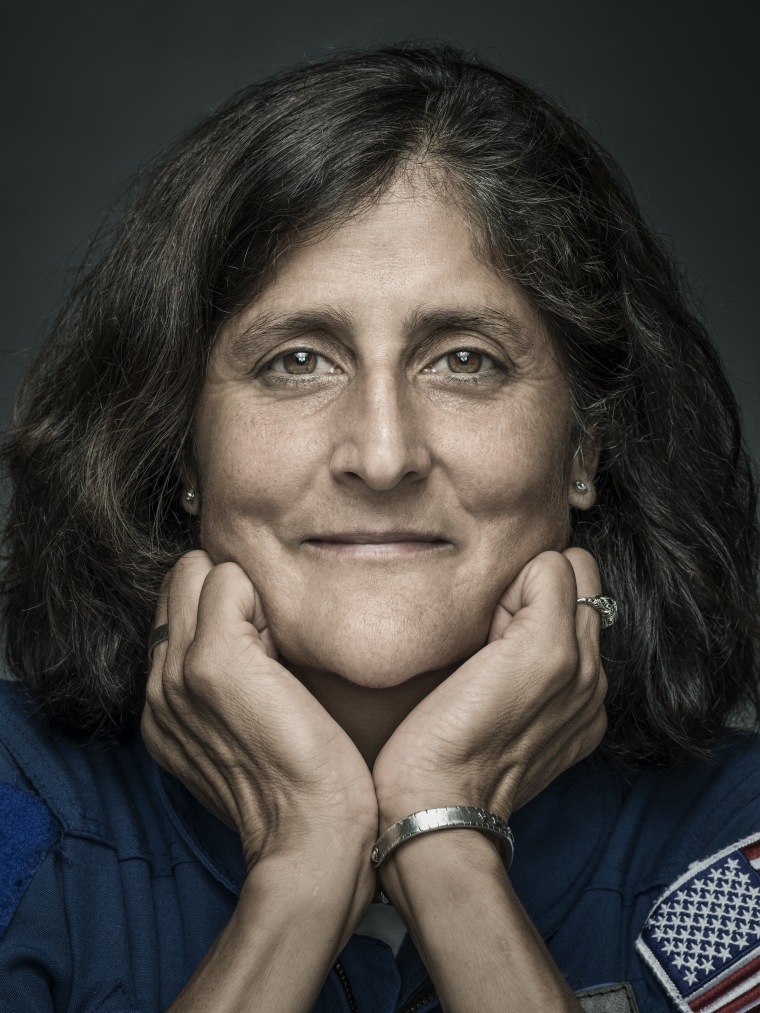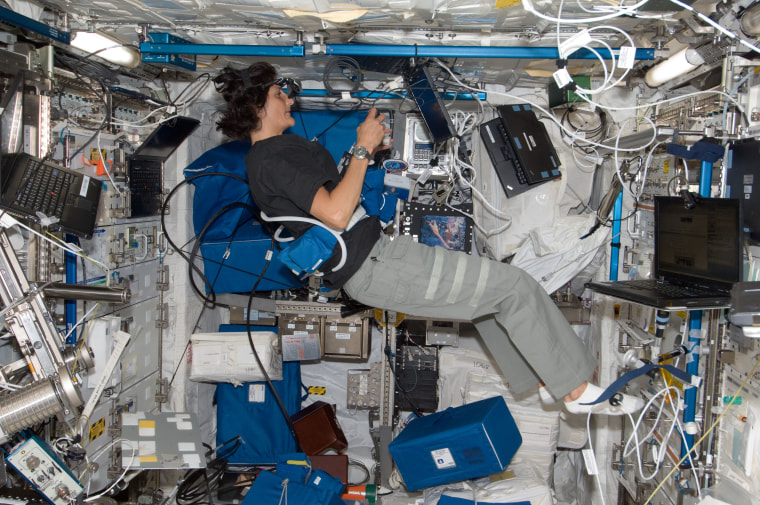This is chapter four of a four-chapter story.
In her two expeditions aboard the ISS, Sunita Williams racked up more than two full days of spacewalking — giving her more time floating in the void than any other woman except Peggy Whitson (#418). On her most recent extravehicular adventure, to fix a slow leak of toxic ammonia coolant from one of the station’s solar panels, Williams was tethered outside in her bulky space suit for six and a half hours straight as the Earth’s colorful orb spun below. She finished the job right on schedule, almost to the minute.
That’s another thing NASA wants from its space workers: flawless completion of difficult tasks in the extraordinary circumstances that are a normal part of space operations. That’s just as important as knowing what to do in an emergency, and it’s why astronauts train for so long before they board a rocket.
Williams rehearsed her spacewalks underwater on an ISS mock-up submerged in an enormous swimming pool. Forty feet deep and so large that it holds more water than nine Olympic-size pools, the Neutral Buoyancy Laboratory at Johnson Space Center puts astronauts through one of the more unnerving phases of their training.

Williams’ six-hour spacewalk felt familiar in many ways, because that’s how long astronauts typically spend under water as they practice their extravehicular tasks. It’s not a pleasant experience, with a 300-pound suit pressing against your skin and the water resisting your every move. But it’s the best way NASA has found so far to simulate on Earth the strange experience of building, repairing, and reconfiguring equipment in outer space. And for Williams, six hours in the pool was nothing compared to the nine days she lived underwater at a depth of 62 feet in the Aquarius habitat, a submerged research facility off the coast of Key Largo, Florida.
Photo Gallery: Space Travel Up Close and Behind the Scenes
It’s easy to tell from her demeanor and resume that Williams is unflappable — another characteristic NASA looks for — and used to handling complicated equipment. Ask her about the ammonia leak, and she laughs as she grants that the risk level was “just crazy.” But that’s life as usual for the 52-year-old Navy veteran, who flew combat helicopters in the Persian Gulf during Operation Desert Shield and has spent more than 3,000 hours piloting 30 kinds of aircraft (some experimental). Williams got her call from NASA while deployed aboard the USS Saipan, an amphibious assault ship.
NASA recruiters look for leaders, and Williams fills that bill as well. When she was just 27, she was put in charge of a helicopter detachment delivering aid to the victims of Hurricane Andrew in Florida. She served as an instructor for the Navy’s test pilot school, and as the assistant air boss on the Saipan. After her first space mission, working for more than six months on the ISS as a flight engineer, NASA promoted her to deputy chief of the astronaut office.
Williams says the hardest part of her training wasn’t the physical stuff. It was learning Russian. All astronauts traveling to the ISS must be fluent in both English and Russian because those are the official languages of the space station, and currently, the only way astronauts can reach the orbiting platform is via a Russian Soyuz spacecraft. Conversational Russian is not good enough — you must also be able to speak and comprehend all of the jargon peculiar to spaceflight.
Today, Williams is one of the astronauts working on NASA’s next big step in human space travel — not Mars, but the use of American-made commercial rockets, operated by Boeing and SpaceX, to ferry people and cargo to the space station. With a B.S. in physical science from the U.S. Naval Academy and an M.S. in engineering management from Florida Institute of Technology (which she picked up after NASA rejected her first application), Williams has a good mix of education and field experience to help the companies tailor their capsules to meet NASA’s needs.
It will probably be a few years before NASA puts out another call for astronaut applications. The job pays only about half as much as a commercial airline pilot makes, and it involves more stress, risk, and effort. And almost to a person, the successful applicants have gone to extraordinary lengths to prepare for the role, seizing every opportunity to do something above and beyond. Yet it’s a safe bet that when NASA next opens its inbox, the applications will come flooding in.
Why? The challenge, the prestige, the fame, the chance to make history and inspire others — those are all big draws. But astronauts who’ve been to space often say the best perk of the job is a chance to experience the “overview effect”: the life-altering sight of our precious planet from space. That out-of-this-world view has turned some former astronauts into avid environmentalists and others into political leaders on a quest to make the planet just a little better. In any case, the view is reserved for one of humanity’s most exclusive clubs — a club with fewer than 600 members.
PREVIOUS CHAPTERS:

